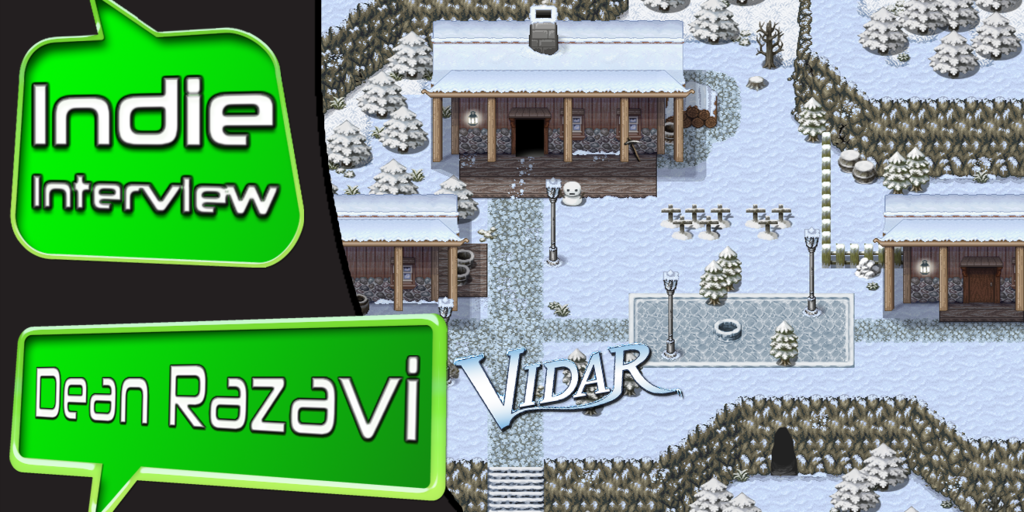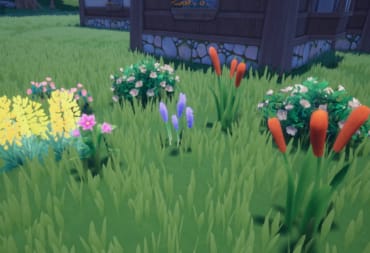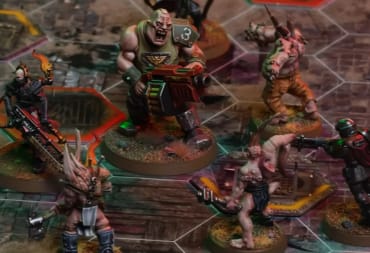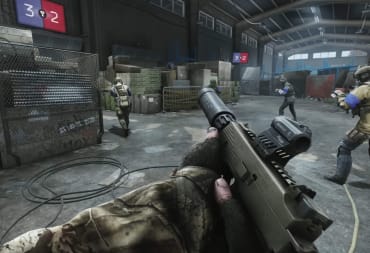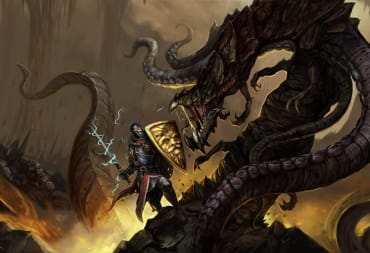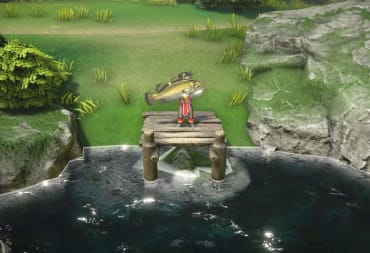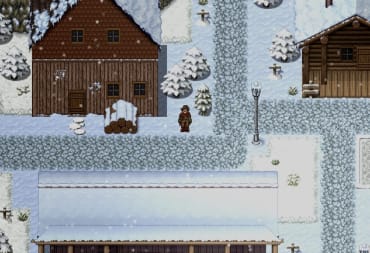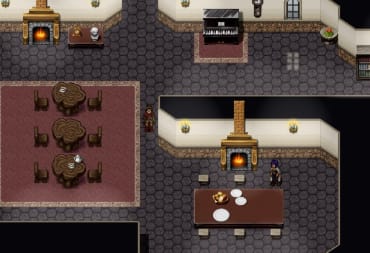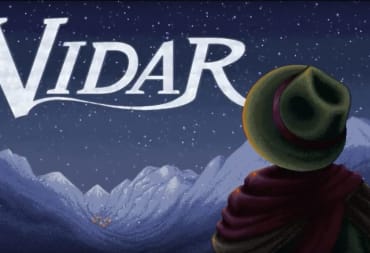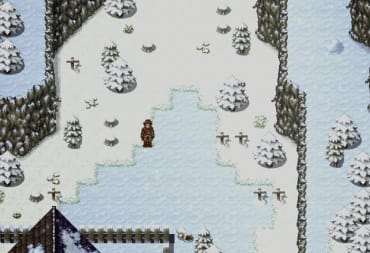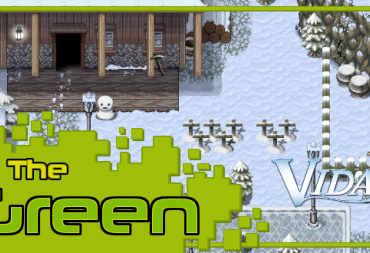This week at TechRaptor I had the chance to exchange some emails with Dean Razavi, the lead developer on Vidar. We recently covered him on To The Green and were talking on different subjects about his game, indie development and the industry in general. The only editing that has ocurred is ordering follow up questions after the original.
TR: Can you tell us about yourself, what got you into game development, and your experience?
Dean: I've had a bizarre journey here. I started out studying music, went to law school and have been a lawyer for about 4 years, and am now doing game development. Even though it's so far removed from everything else I've done, it feels like a homecoming. I've grown up with games, I've celebrated games, my wedding was game themed. So developing has felt really...right. As a hobby for about 10 years now, I've staged what I call "Hunts:" large-format urban scavenger hunts that are focused more on completing challenges than finding something and taking a picture of it. At one point, my last one had my friends wearing mirrors on their backs and chests and trying to aim a laser pointer light to reflect on all of them - a real world Zelda mirror shield puzzle. All involve riddles of various forms, and a lot of times the players have to find unique ways to combine various tools they find.From all of these, it seemed like making video games was a natural progression, particularly a puzzle game.
TR: How much do you think your legal training has helped you with doing indie development? What sort of skills overlaps are there?
Dean: Logic is logic, and I really think attorneys make great developers (and developers would make great attorneys). From a pure programming perspective, the same brain that can figure out how 10 different laws work together can also make that assessment in code. Beyond that, I think it takes a dramatically inflated sense of self-worth to have the skin thick enough to become an independent developer, and lawyers have those in spades ;)TR: There’s been a lot of talk about things like emergent stories and living worlds but for the most part those tend to be more marketing speech than anything else. With Vidar, you seem to have taken the idea of stories emerging from events and what the player does to heart – what led you to do this, and what have you done to avoid the mistakes others have made?
Dean: Playing Skyrim and being told by an NPC that I should check out the mage's college, when I was in fact the head of that college, was one of the biggest let downs of my gaming life. Which I guess means I've led an extremely charmed life, at least when it comes to video games.Before I got to "emergence" or "procedural generation" and all those things floating out in the indie dev universe, I had an entirely different model for Vidar. I looked at games which use the conceit of a central town that gets built up as you progress, where the blacksmith arrives and now sells better weapons or the alchemist arrives and has with him some great potions. I wanted to turn that on its head and ask, what happens if those people leave? And what if it's random? Can you still have progression, or really even a game at all? Does it feel right? It turns out, it does and it doesn't, and that was what the extremely early prototypes of Vidar looked like. When I finally had the realization that the storyline of my blacksmith was way more interesting than whether or not she was there to sell you an upgraded sword, I took out combat entirely. Every NPC became a quest giver, and I never looked back.
Everyone tackles emergence and randomness in their own way. I've seen some games occasionally try to generate characters, and it's never sat well with me. It's like a computer has buckets of possible options for an NPC with no concern for what kind of character it creates. So you get Mary Goldberg, an 8 year old black man who has scoliosis and gives you a quest to rescue his daughter. That's an extreme example and easy to address with procedural generation, but you get the point - these characters feel like 2d cardboard punch-outs that exist purely to give you a quest. Maybe because it's what I started with, but I'm not doing that in Vidar, I'm using predefined characters so I can make them feel more real, more relateable. And in fact, the core living world aspect of the game is focused really on two things; what quests you've done and who is still alive. By constantly examining just those two factors, I'm able to have a great deal of control over how that world develops. The term "living world" may also be a misnomer - Vidar is anything but living.
It's important to study other games, too, and the biggest lesson I've learned in the past 2 years is from Papers, Please. That entire game takes place in a passport check booth. The scope of the game is seriously a room smaller than my apartment. And yet it tells a grand story, because it's so localized. So to avoid the mistakes others have made, I've kept Vidar local - there are only 24 villagers, and we start killing them off pretty early. The smaller the world, the bigger the story you can tell.
I'll also note that when I was demoing the game at MAGFest, more than a few people asked "man so like, how many endings are there in the game?" And the first time I heard the question I was actually a little struck - there are really only 2, either you stop the Beast before everyone in town is dead, or you become it's 25th victim. And it's because the Beast is the MacGuffin of the game - it doesn't matter anymore than the statues in Final Fantasy 6, the Crucible in Mass Effect 3, or whatever the heart/darkness/key thing is that Mickey's trying to protect in Kingdom Hearts. Vidar is all about the journey the individual citizens take through the game, and the possible combinations of those is something astronomical. But game designers so far have done a good job of convincing people that emergent stories mean different endings, and have totally forgotten about the story part.
TR: What is your opinion of the state of storytelling in the games industry?
Dean: There are some amazing stories that continue to be told in games, and the fact that emerging narrative hasn't reached its full potential doesn't mean that other games aren't doing something tremendous. Triple As sometimes get slammed for this, but it's only partially deserved. I won't spoil anything, but Guild Wars 2 has done some really amazing narrative twists this past month, and they're an MMO. The genre notorious for some of the worst storytelling in the industry, and they've got me on the edge of my seat.There's a reason the novel has existed for thousands of years, but the choose-your-own-adventure book has fallen out of favor. A story "on rails" (as the games industry might put it) gives the author so many more tools to make it infinitely compelling. In 2013 we saw The Last Of Us and Bioshock: Infinite, and while last year AAAs didn't wow us with their stories, it's ok to have an off year.
And indeed, Telltale is doing some amazing things too, so maybe choose-your-own-adventure isn't quite dead.
As we get to explore new forms of storytelling, there are inevitably going to be bumps in the road. But that's what the indies are for. I'm working on building emergent stories through changed circumstances; Noir Syndrome by Glassknuckle Games tries to generate a new murder mystery every game; a former Blizzard developer is working on a system to handle emergent quest lines. AAAs can't take the risk in investment for a system that might not work, but we certainly can!
TR: The demo has the ice caves, but what are the different levels you plan on including in the game and how does an individual area effect puzzle designs?
Dean: Yeah, so we're mid-Kickstarter right now which is primarily to fund the art. And the art for the ice cave has been complete, so that's why you're seeing a lot of it in the demo. The rest of the zones look like some great MS Paint rectangles right now ;)There are at least 3 more "biomes" included the game. The creatively named Dark Cave, Water Cave, and Boulder Cave will all be added in addition to the Ice Cave. Each has a core mechanic that's central to every puzzle there. So in the ice cave you see frictionless ice puzzles all over. In the dark cave, you'll have a lantern and the light around you will constantly be closing in - you'll need to continually refuel in order to see the puzzles. But there are tons of variations on each theme. In the ice cave, there are arrows that bump you in different directions, and those can get rotated around; there are doors that can be passed or block you, depending on if they're up or down; there are tiles which break once you pass over them once, so you can't really map out the entire puzzle from the start easily; there are imps that can knock you off the ice and turn the puzzles into something more focused on timing. It's the same with each area of the cave - a core mechanic that guides what kind of puzzle you're dealing with, and then individualized mechanics within that.
A favorite example are the wolves in the dark cave. Generally the dark cave is a frantic mess, where you're trying to light all the torches in a room before they burn out, keep your fuel light up, and race over bridges that flicker on and off. To add to it, there are wolves that will try to track you down and kick you back to the entrance, and they get faster the less light your lantern gives off. A side area of the cave uses the same mechanics for a completely different puzzle - you need to lure 10 of these wolves into areas where you can confine them by closing a door. Now you're only kind of trying to avoid the wolves - you actually need them to chase you.
TR: For the various puzzles that are random, how do you plan on making sure the difficulty doesn’t swing too much and that the puzzles make some sense in relation to the quest at hand?
Dean: There are three layers of "randomness" to the puzzles. First is the actual rooms you get while exploring the cave. In the ice area, you'll get about 4 or 5 rooms filled with ice puzzles, but the game has 10 to choose from when placing them. Second is the path through these rooms. Each room contains anywhere from 2 - 6 puzzles, but you won't reach all of them. Blocks and paths will be created to force you through in a particular direction to see only some of the puzzles. If in the demo you played the nun's ghost quest, you'll see this pathing thing right off the bat. The arrow at the entrance to the cave is either pointing right or down, forcing you to one of two possible puzzles. Finally, the last layer is the content of the puzzles themselves. The placement of the rocks and arrows and doors consists of a single option pre-designed just for that puzzle space. There are about 10 options per space, meaning that assuming you get the same room and same path as last time, it's still unlikely you'll get the exact same puzzle option.By using a puzzle bank like this, I can actually control flow while still keeping the game random. Sometimes I want to be able to teach you a specific skill (like how to jump on floating boxes in the Water Cave). I can have 30 different puzzles which use the mechanic in different ways but all designed to make sure you learn the skill.
Difficulty balance is tough. Like, really tough. Tweaking one little thing oftentimes results in a huge change in completion rates. What's also interesting is that when I've demoed the game, the majority of players fall into two categories: they solve the puzzle in half the time allotted, or giving them 3 days wouldn't be enough for them to solve it. It's not a nice, neat bell curve where I can try to aim the peak at a comfortable completion time. At that point, it becomes a game design decision. I may ultimately add a "normal" and "hard" mode to Vidar to accommodate both groups, I'm not yet decided!
I'm using an analytics company called Indicative to keep track of pretty much everything in a playthrough. So, for example, most of the puzzles when you're trying to save Sandor's son Erik have between a 65% and 70% completion rate, and while that's a little low, at least it's consistent. One option has a completion rate of 27%. That particular option is way too hard, but I've left it in for the demo because it's fun to watch people struggle sometimes. I'm not looking too hard at the numbers now, but you can bet that in beta I'm going to have those charts on every monitor in the apartment.
TR: A lot of game developers seem worried about people not experiencing their ‘full game,’ yet with Vidar you have made it impossible for that to happen in a single playthrough – was that something you were aiming for from the outset or more a consequence of the type of story Vidar became?
Dean: Making sure that you can't see all of Vidar was an extremely deliberate choice. I have this fantasy of people playing the game 3 times and then finally logging on to the wiki to compare notes and realizing that they've only seen 20% of the game. So much of Vidar has been inspired by events in my life, and this choice is one of them. The Germans call it Torschlusspanik, or Gate Closing Panic. It's that tummy-feeling or that ennui you might get from knowing that every day, there are fewer options open to you. Maybe the fact that I've bounced from composer to lawyer to game developer gives you a hint that I'm certainly plagued by it ;)Games tend to avoid Torschlusspanik. There are occasionally the super rare treasures or secrets that you have to get now or you'll never be able to get it again, but it's rarely anything critical for the player to have. In fact, in most RPGs, the game gets broader as you play. You start in a small village, you only have one party member and one skill, and by the end there are a dozen people to choose from, 30 different mechanics, 80 cities, 200 minigames, and an airship. You're just before the climax of the game, and the world is your oyster. That's so not how the world works. For every person that turns 30 (which is pretty much retirement age for most RPG heroes) and says "now I really get to do what I've always wanted" there are a thousand who say "I'm 30 and have achieved nothing that I wanted to." We're preoccupied with what we haven't done except for in games.
So I absolutely wanted to convey that to anyone who plays Vidar. Every expected nicety in the game is a quest reward that you can't get if that villager dies. That timer in the demo which tells you how long you have left? That's a quest reward. So are sprint shoes, maps, quest journals, save points, all of the things a player wants to have in their game. And the chances to get those rewards go by quickly - the gates are really closing in Vidar, and it's time to panic.
TR: You mention putting a lot of the niceties that people expect as quest rewards - these days we see a lot more handholding for games at the start with stuff like quest markers and such. What in particular makes you want to invert that trend and make easing things or 'quality of life' stuff rewards?
Dean: I think that handholding has just always been in games, but doing it in a creative gameplay way is really tough. The famous example is Mario 1-1, where the first goomba and first question block are placed in just such a way that most players will instinctively jump to avoid the goomba and end up seeing that the block will give them an item. That's handholding, but it's not a giant quest marker or block of text explaining what to do. It's handholding by conditioning the player, and if you do that right, you don't need a quest marker.Ultimately, my incentive for changing the trend in Vidar was to make the game itself play different every time. I'm someone who was obsessed with Chucklefish's "Starbound" for like easily a year before it came out. I made my preorder the first day, I panicked when the beta launch date was smack in the middle of my honeymoon. But over a year of playing it now brings up the familiar refrain for most sandbox games. While sandbox promises replayability, it's only the map that changes. The way you play the game is still the same, just a different planet with different trees. "Replayability" actually means more than what we as an industry have described before - it means that the next time the player hits "New Game," they have to engage the game differently than they did before.
I don't pretend that Vidar is the absolute answer to that, but it's a step in that direction. A player who doesn't have a timer explores less, because they don't know how much time they have. A player who doesn't have a quest journal is writing down a lot of notes in the real world (or maybe forgetting to do quests the whole time). A player who has the ability to teleport through the dungeon has a different game than the player without. So I'm hoping that giving the player only some of these things will make them play Vidar differently.
TR: There appear to be some themes of darkness and fatalism in Vidar, yet also others in what I’ve seen in the demo and the writing. What would you say are the main themes in Vidar?
Dean: Vidar is focused on making the most of your limited time. I began sketching the story out shortly after a dear family member passed away. He was very much my role model and kindred spirit in life, and while I miss him terribly, he lived a great 71 years of life. He made the most of it, and it's an example I strive to match and to honor every day.There's a consistent frame story in Vidar which isn't in the demo. It's the Stranger's story, the main protagonist, which is told mostly in flashbacks each night of the game. Before the game starts, the Stranger's received a letter from his dying father. The father was a deadbeat dad who disappeared early in the Stranger's life, but wants forgiveness on his death bed. The Stranger's set out to the city where his father now lives, unsure of what to do when he gets there. On his way, he's trapped in a snowstorm and ends up in Vidar. Even though he might be able to leave, he actually takes up the town as a cause rather than continue on his trip (which, much like Vidar, has a deadline). He's procrastinating, and has decided that rather than make a choice, he'll try to tackle an inevitability.
To that end, each of the NPCs in Vidar have their own perspective on the circumstances. You mentioned fatalism, there is absolutely a fatalist in town, his name is Mihaly and he's the romantic musician. He's convinced himself that death is a natural part of the human condition, and art is a natural expression of that condition, so to truly make his art it's perfectly ok to be surrounded by death until his time comes. This is obviously not the majority opinion in town. Most are afraid of death, some see it as part of a divine plan. Some grieve, a select few are joyous when a truly hated enemy dies. But for all of the NPCs, even after a day or two of grieving, they have to pick up and continue with the town's work and with trying to survive. So by and large, the game isn't exclusively focused on a fatalistic end (though the tagline might suggest otherwise) but on a sense that, no matter what happens in Vidar, there will be an after.
Another core theme in the game is nostalgia. A longing for the past that's so strong it becomes a disease or an illness. This obviously dovetails a lot with what I was talking about before, but I've tried to specifically call nostalgia into focus with the art. Becca Bair is the pixel artist behind the game, and she's really done something remarkable. The style and spirit of the art in Vidar is all SNES golden-era RPGs - Chrono Trigger, FF6, Secret of Mana being the obvious touchstones of inspiration. But those games were (intentionally) extremely bright and filled with big, bold, primary colors. Vidar is all desaturated, it's grayed out and run down. It's like a dirty, lesser version of what those games used to be, so for gamers in my generation that grew up on the SNES, it should trigger those heart strings.
There are also some interesting social storylines that can (but don't always!) play out in Vidar. There's a poor family that was barely making ends meet before all this mess started in Vidar. In a desperate attempt to get some food, the father/husband has gone foraging in the Beast's cave for anything edible. How the rest of the citizens react to the mother/wife's begging for charity can change depending on what's going on in their own lives, but most of those scenes are designed to be a little uncomfortable in the gut. There's also a big conflicting religions story arc. Most of the town worships a pantheon of identical, innumerable, impersonal gods. A few worship a single water spirit - and that water spirit (an enchantress who has made a good name for herself over the past thousand years) actually resides beneath Vidar. Depending on how the in-fighting among the religious villagers plays out, the game can take some pretty big turns.
TR: Nostalgia seems to be something that a lot of the better indie games tend to look at as big publishers got away from those types of titles. With the background of Vidar being that of a capital of a once empire, how do you want to convey that outside of the art?
Dean: Certain characters have more of a longing for the past than others, and that comes through in their quests and narrative. The player will also go pretty deep beneath the surface of Vidar, and start to encounter ruins of the old city. A lot of the history in the game will start to crop up as players solve puzzles and descend. You can see a little bit of it in the demo - Bernadett's ghost quest involves returning one of five possible ghosts to their grave, and as you do they chat at you about their lives and the past.The important part of nostalgia is to learn from Shovel Knight (seriously, learn from every game you come across!!!) Make a game that plays like what you remember of the SNES - don't make a game that actually plays like those games. The industry has learned a lot about how to make an enjoyable experience since the mid 90s, don't throw those lessons out the window in favor of recreating your favorite childhood game. That that memory of what it gave you, and imbue your current game with all of that rose-tinted goodness.
TR: You appear to be a bit of an RPG Maker fanatic looking at your blog – what interests you so much in that engine in specific and what would you say to its detractors? Were there any real limits placed on Vidar due to the engine?
Dean: I'm obsessed with it! Truly, I started the blog as a response to detractors of RPG Maker - to show people what's possible with an intermediate level of knowledge about the engine. There are a lot of hobbyist games that use default art and don't attempt to change anything in the engine, and I think those give RPG Maker a bad reputation. But it's like any other tool, it's as good as the user. We've all played some crappy Unity games, but for whatever reason have decided that Unity is capable of making professional games, and RPG Maker isn't.I really became interested in these kinds of makers starting with the Starcraft 1 map editor (and let's not forget that the Warcraft III map editor is basically responsible for making the MOBA the most popular genre of game in the world right now). The ability to get into a game and start making it fast without having to worry about 2 months of groundwork was always appealing to me. The same is true for RPG Maker. I didn't have to script the ability to use the arrow keys to move, or something that generates dialogue windows, or even launching and closing the game. RPG Maker did all of that so I could get down to things unique to my game, like random puzzles and random narratives.
Which is not to say RPG Maker hasn't been a fight occasionally. Until just before MAGFest, Vidar was in an old school 4:3 aspect ratio. The random puzzle spawner was acutely painful, since RPG Maker expects all of the interactable things in the game to be already placed, rather than spawned by a script after you hit New Game. But so far, everything's been fixed. As I've been working on it, I've been sketching out mental notes for an RPG Maker MMORPG. It's totally doable.
TR: On RPG Maker, I think the issue is that its ease of publishing has led to something like fanfiction. Its not that good ones can't exist, but more that there's so many bad ones there that it tends to bury the good in many cases. I see a lot of that when going through greenlight on steam. If you had to give a suggestion to people using RPG Maker what would it be?
Dean: There absolutely is an overwhelming hobbyist community for RPG Maker, but that's not a bad thing necessarily! I love that people use it to make hobby games. I mentioned that my wedding was video game themed, we actually sent a 20-hour RPG out with our wedding invites in which the wedding party had to come together to save me and my now-husband from mountains of work and get us to the wedding in time. I made it in RPG Maker with the default sprites, very little customization, etc. It was exactly what I wanted, and inspired me to do more. So hobbyists, don't stop hobbying!But if you're thinking about a commercial release for an RPG Maker game, slow it down and really think about what you're doing. First, you're going to need to rewrite most of RPG Maker, and while the community is phenomenal support for scripts and stuff, so much of it has to come from you. Standard turn-based combat is kind of boring, but that's what RPG Maker comes with. the default art has been used to death and is recognizable as such by a lot of people (and is a signal for "I didn't invest anything in this project"). If you're doing a Grand 40-hour RPG, remember that most big JRPGs have some really complicated system to tie the whole thing together - a sphere grid or a troop system or something massive and about crafting. Learn from them - you need that to, and RPG Maker doesn't come with anything like that.
A lot of people have had success using RPG Maker to do something it wasn't "meant" to do - To The Moon (and hopefully we count Vidar as successful soon!) with puzzles, recently LISA with a platformer. BUT, there was an extremely scathing (and a bit unfair) review recently of LISA which betrayed the writers lack of familiarity with RPG Maker games. Controller mapping wasn't great. Resolution support was poor. Options menu was non-existent. I've fixed these all in Vidar, but it's imperative to remember that if you're taking an RPG Maker game to Greenlight or to Kickstarter, people will judge it not against other RPG Maker games, but against other games. And you better be able to compete.
TR: You’ve been doing a lot of crowdfunding-esqe things over the last few months – first with a Epocu campaign, and then Greenlight and now on Kickstarter. Can you tell us about the preparations you did for each, what you learned, and how they went/are going?
Dean: Perhaps because I'm new to the scene, but social proof is incredibly important to me. Vidar is of course my baby and my love, but if I'm going to invest a ton of resources into it I want to know there's at least some market out there for the game. Crowdsourcing is a great way to test those waters.I treated Epocu as Kickstarter-lite. It was a low pressure, low ask endeavor to see if I could even convince 50 people to give me a single tweet. For those that don't know, Epocu is like Thunderclap but exclusively for indie games - you set a target number of supporters, and if you reach it, then on the last day you get to commandeer all of those supporters' Twitter or Facebook accounts for a single post to blast about your game. My takeaway from the entire exercise was that people don't read Twitter nearly as much as I had hoped ;) Honestly, it helped me to focus my copy about the game, to hone in on core messaging that seemed to attract people, and to see what kind of advertising for a crowdsourced campaign works. That way, when I launched the Kickstarter, I knew generally what kind of posts and updates would get engagement.
The Kickstarter has been a monumental undertaking, but we're halfway through and halfway funded. We're exactly on target to meet the goal. It's the most exhausting of both worlds - we haven't blown it out of the water like card games about exploding cats, and we haven't completely failed, which means every day is focused on trying to keep up the pace. Like all crowdsourcing, Kickstarter is definitely about exposure. After participating in things like MAGFest, I'm absolutely convinced that there exists a market out there for Vidar. I just have to find the people that are really excited about what it has to offer!
The prep for my Epocu and Greenlight campaigns were actually short compared to the Kickstarter. There are so many little components of a Kickstarter page - the video, the graphics, the headers, the copy, the reward tiers, the stretch goals. It took about 2 months to really get to where I wanted to be, and I really encourage people heading in that direction to take a look at other Kickstarter pages and steal liberally.
TR: You’ve participated in several indie game demonstrations and such with Vidar – could you tell us about those events and what your thoughts on them are?
Dean: I'm so incredibly fortunate to be living in New York City, where there is anything everyone could ever ask for. There's a really thriving indie game community here, and there are a few groups here spearheading the cause. One is Playcrafting (formerly NYC Games Forum). Every three months they host an expo night which, in the year I've been participating, has kind of grown into a mini-convention. About 50 indie games get a little space to show off their game to over 200 people. Vidar was also chosen to be part of the MAGFest indie game showcase, the Boston Festival of Indie Games showcase, and the NYC Year of Light showcase. Recently also another group in NYC, The Sheep's Meow, has been hosting really well attended "arcade nights."These events are invaluable, and hands down the most important thing a dev can ever do. Everyone should be applying early and often to showcase events, and where the group has a more open door policy like Playcrafting, devs should be going every time. There is no better than watching hundreds of people play your game right in front of you. Traditionally game devs have been a little more private in making their game, and then finally after pouring all their blood sweat and tears into it, emerging from their apartment/office victorious with a fully polished game and no idea if anyone wants to play it. We should be embracing the iterative trend in nearly all other forms of tech development.
I think my favorite example of learning from these events was the little flavor text that you can occasionally find in Vidar right now. Originally, those weren't there at all. At the first Playcrafting event I attended, because the game's graphics are reminiscent of SNES RPGs where elixers were hidden in grandfather clocks, players immediately started going up to every item and pressing A. There was nothing there, but without fail every player would spend the first 2-3 minutes of the demo just walking up to walls, bookcases, ovens, everything and pressing A. I felt so bad that they were expecting something, and also that they were wasting time.
To give them some reward for checking their environment, I added about a dozen little flavor text points. Some were more meaningful like the books, others were shout-outs to my team, and some were straight forward "it's snowing, yo" comments (not actually "it's snowing, yo," but that's basically what they are). The next time people played the game was at Boston FIG. Players still clicked A all over town and, what was worse, now that they were rewarded with it working rarely, they were determined to do it for even longer. I had solved one problem (no reward for exploration) but exaggerated another.
Finally, I came up with the idea of telling players where the interaction points are. There are now unobtrusive indicators that appear when you get close to an item. At demo events since I've added the mechanic, it works like a charm - it immediately conditions people to stop checking wall tiles that don't have a little arrow hovering above them. This is a silly little example, but it's the perfect example of how indie game demonstrations can really help drive innovation in game design.
TR: We see even big studios like Square Enix crowdsourcing and crowdfunding now too. Do you think its part of the evolution of game development to involve players at earlier degrees?
Dean: Some of it is definitely an attempt to cash in on what Square sees as "free money," and this is also the new form of pre-order for a lot of people. While very indie should be using crowdsourcing and crowdfunding as a way to connect with an early community and get feedback, I have a sneaking suspicion that 1) there's no chance a Square Kickstarter could ever fail and 2) if it did, there would be little to no reevaluation of a game's core mechanics to determine why it failed (instead chalking the failure up to marketing). While it's great in theory for big studios to be "reaching out," I'd be surprised if the people who backed the new Shadowrun expansion get as much immediate attention from a developer as my community does ;)TechRaptor: I don't know if Harebrained is necessarily big - do you think that with the way things are going that we need a term for the larger independent developers? In the Indie we have now this mixture of one man teams, small 5-10 man teams and these larger AA-esq studios like Inxile, Double Fine, Larian, Harebrained all grouped into that single term?
On Square Enix, I was thinking not just on their Kickstarter - though I agree I wouldn't be surprised if someone high up had a pledge to match there or such to get it through - but also the Collective program where people say if they are interested in ideas and sourcing out to listen to that.
Dean: It's funny, when you're a 3-man team, someone like Harebrained with 20+ people look massive. Double Fine has about as much in common with me as they do with EA ;)To speak for a moment about the reverse of your question, about an hour ago someone just started a conversation on one of the Indie Dev Groups on Facebook asking "what is triple-A?" and actually I think Double Fine is a really interesting example here. Sometimes it feels like AAA is about the budget... but Schafer told everyone during his Kickstarter that the budget for Broken Age exceeded many of the games he worked on for Lucas Arts. Ultimately, indies are on a sliding scale, and there are as you call them AA-esq studios who are quickly traversing that scale from indie-land to AAA-land. There are well-documented pros and cons to indie games, and those pros and cons will obviously change the bigger (and more funded) you get. It's not a bad thing! Everyone can find their right balance on that spectrum. And maybe rather than buckets to put all of the indie games in, we need to realize that the current binary categorization doesn't really match reality anymore, and do away with indie/AAA altogether.
For Square, their role as "indie publisher" through the Collective program looks more like a Greenlight process than anything else. I think all indies look to these vehicles for "social proof" as well as funding - that is, we want to know that what we're doing has legs. Collective and Greenlight for that matter are like social proof mechanisms for big guys. They want to know ahead of time that an investment is going to pay off.
TechRaptor: Any other thoughts?
Dean: Please for the love of everything good in the world, back me. I am not above begging to make this game happen, and I really hope that people see the potential for advancing the storytelling ball in video games. There's a chance to do something really awesome here :)I'd like to thank Dean for talking with us extensively over the past week on stuff, and you can find Vidar on its website, Greenlight, and Kickstarter.
Have a tip, or want to point out something we missed? Leave a Comment or e-mail us at tips@techraptor.net
